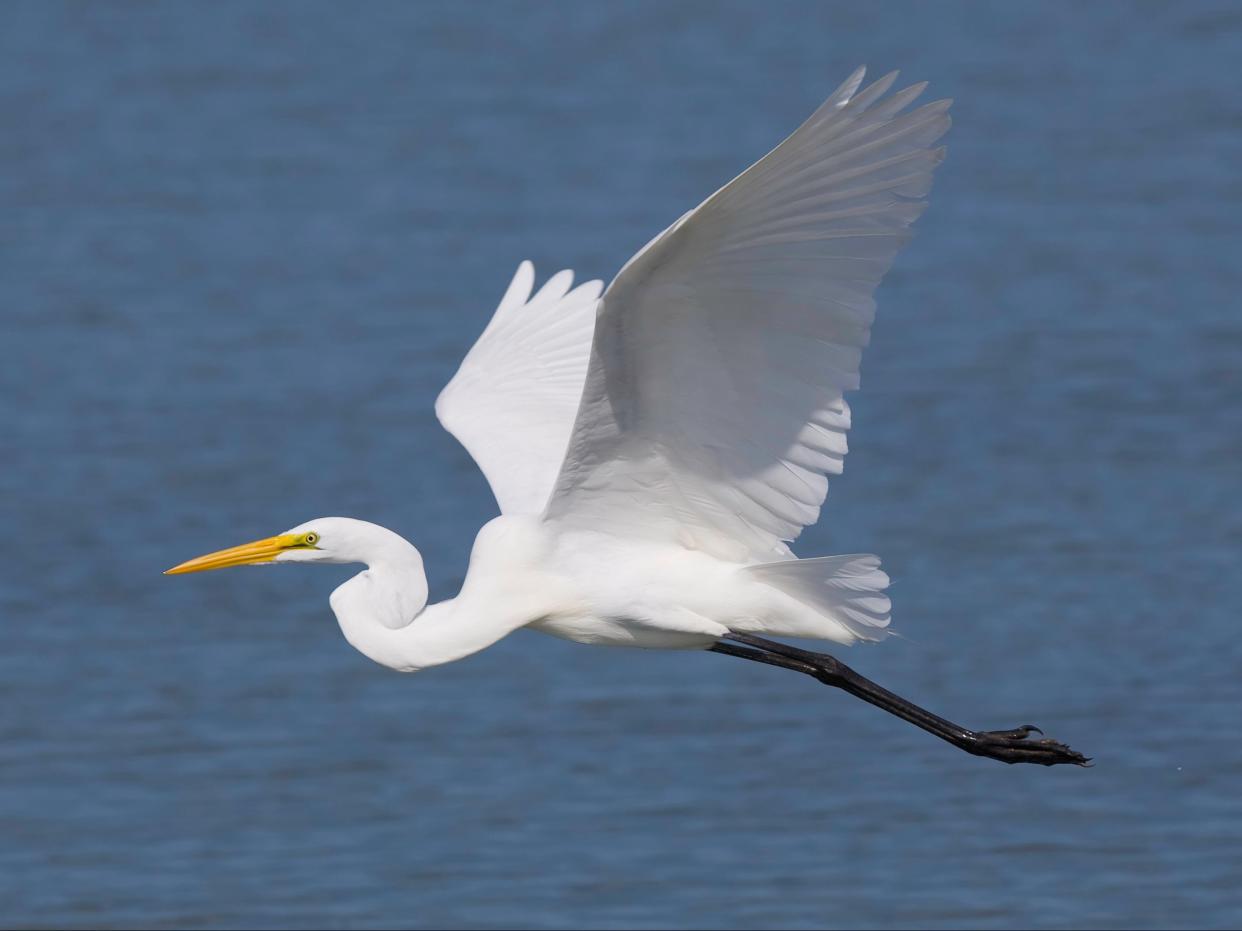Great white egret no longer rare bird as numbers boom across UK and Europe

The great white egret — a dazzling type of heron — has become increasingly common across the UK, and from 2021 will no longer be classed as a rare bird.
The species was previously considered an exotic visitor to British shores, and in 1970 as few as 150 were recorded across the whole of Europe.
But in 2020, the great white egret was seen regularly by UK bird watchers. It was reported more than 8,000 times in almost every part of England and Wales, including in 2,300 new locations.
Bird Guides, a magazine and website which monitors sightings, said the great white egret had become the most common rare species reported in 2020, averaging some 10 per cent of all daily reports.
This has led the organisation to change the bird’s status.
In a blogpost, Bird Guides said: “A look back over the 10 years prior to 2020 shows ... gradual increases year on year from 1,085 reports back in 2010. In much the same vein, reports of great egrets exploded in the latter half of 2020, with 2,424 reports between January and the end of June compared to no fewer than 5,860 reports since the beginning of July.
“This reflected a notable 'feel' that the species has become much more numerous in many areas this winter.
“This increase mirrors the remarkable range expansion of the species across the continent. In the last 35 years, the European breeding population has increased from an estimated 150-200 pairs in the early 1970s to between 11,000 and 24,000 pairs by 2000.”
The publication added: “It is the sheer volume of reports, as well as a high volume of repeat reports from sites where the species has become a semi-permanent resident, that have led us to this decision, with the expectation that the species will continue to become even more commonplace over the coming months and years.”
There will be no change to the species in both Scotland and Ireland, where the species remains scarce.
A spokesperson for the RSPB told The Independent: “The increase is thought to be down to a combination of a warming climate and habitat restoration and creation.
“In recent years, we have seen an increase in other wetland birds such as spoonbills and cattle egrets for similar reasons.”
Great white egrets are distinguishable from little egrets, which are also seen in the UK, by their larger size and yellow beak, rather than the dark beak little egrets have.
They eat fish, insects and frogs, which they catch by spearing them with their long, sharp beaks.
According to the Wildlife Trusts, the Somerset Levels were home to the UK’s first breeding pair of great white egrets in 2012.
The species lives in most of the tropical and warmer temperate regions of the world and is common across large areas of Asia, Africa, and the Americas, suggesting Europe’s changing climate could play a role in its expansion northwards.
The species was previously hunted to obtain the beautiful long-white feathers which formed part of its breeding plumage, which were often used in fashion.
In the United States, they were almost wiped out completely during the late 1800s.
Read More
America is grounded, and the birds have returned
UK’s native birds have declined by 11% since 1970
Dozens of birds of prey ‘illegally shot, trapped and poisoned’ in 2019


